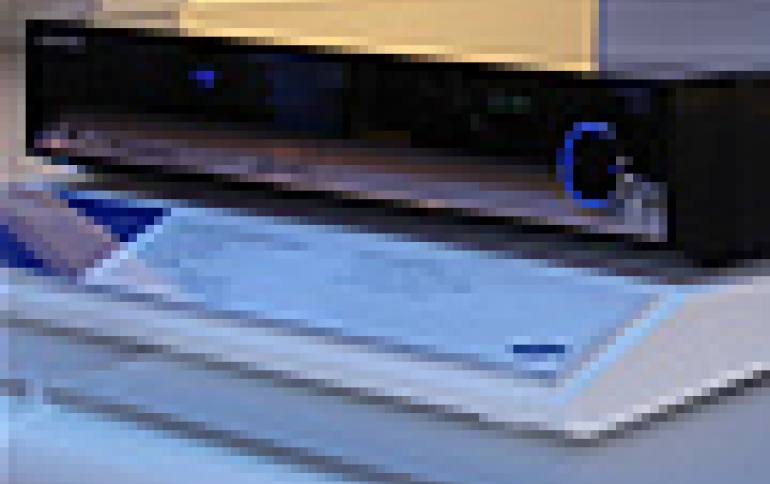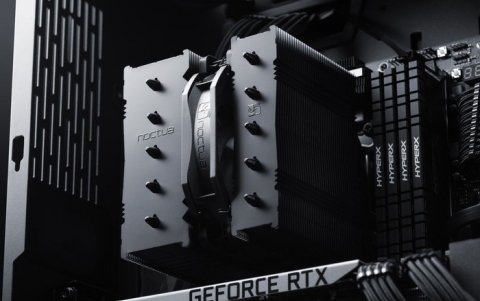
Picture Quality Issue Reported for Samsung BD-P1000 Blu-ray Player
Just a few weeks after the U.S availability of Samsung's first Blu-Ray player, early reviews indicate that the noise-reduction chip used in the player does not early adopters to enjoy the expected high definition experience.
Scott Wilkinson over at The Perfect Vision lab reviewed the Samsung BD-P1000 player but as he said, he has been less than impressed.
"The play back of the latest Sony BD-ROM titles simply didn't 'pop;' there was no 'wow' factor as there was with HD DVD, " said Wilkinson. "I was left with the same impression watching them on a Samsung HL-S5687W 56-inch 1080p DLP RPTV and a Samsung SP-H710AE 720p DLP front projector," he said.
Don Eklund, executive vice president of advanced technologies at Sony Pictures, noticed that the player's image did not match the quality of the master tapes from which the Blu-ray titles were encoded. He contacted Samsung, whose engineers determined that the noise-reduction circuit in the player?s Genesis scaler chip was enabled, causing the picture to soften significantly.
Samsung seems to be aware of the issue, and plans to fix it in the future production devices.
"Samsung is currently working to revise the default settings on the noise-reduction circuit in the Genesis scaler chip to sharpen the picture. All future Samsung BD-P1000 production will have this revision and we are working to develop a firmware update for existing product," said Jim Sanduski, senior vice president of marketing for Samsung's Audio and Video Products Group.
In case it is a matter changing the chip settings, then a firmware upgrade could solve the issue. But if Samsung choose to just turn off the noise reduction feature through its firmware upgrade, then this would definitely not satisfy the early adopters of the Blu-Ray hardware.
Reports indicate that playback of BD titles in a modified player (with the noise reduction turned off) looked much closer to the master video tape and far better than an unmodified player, such as those currently available on the market.
"Disabling the Genesis chip's noise reduction improved sharpness significantly and reduced the occasional temporal artifacts that were sometimes evident in dark, solid backgrounds on the unmodified player. Also, it allowed the film grain - an intentional form of noise - to become more evident," said Scott Wilkinson.
Without doubt, the Blu-ray has the potential to look every bit as good as HD DVD, once Samsung fixes the noise-reduction problem.
"The play back of the latest Sony BD-ROM titles simply didn't 'pop;' there was no 'wow' factor as there was with HD DVD, " said Wilkinson. "I was left with the same impression watching them on a Samsung HL-S5687W 56-inch 1080p DLP RPTV and a Samsung SP-H710AE 720p DLP front projector," he said.
Don Eklund, executive vice president of advanced technologies at Sony Pictures, noticed that the player's image did not match the quality of the master tapes from which the Blu-ray titles were encoded. He contacted Samsung, whose engineers determined that the noise-reduction circuit in the player?s Genesis scaler chip was enabled, causing the picture to soften significantly.
Samsung seems to be aware of the issue, and plans to fix it in the future production devices.
"Samsung is currently working to revise the default settings on the noise-reduction circuit in the Genesis scaler chip to sharpen the picture. All future Samsung BD-P1000 production will have this revision and we are working to develop a firmware update for existing product," said Jim Sanduski, senior vice president of marketing for Samsung's Audio and Video Products Group.
In case it is a matter changing the chip settings, then a firmware upgrade could solve the issue. But if Samsung choose to just turn off the noise reduction feature through its firmware upgrade, then this would definitely not satisfy the early adopters of the Blu-Ray hardware.
Reports indicate that playback of BD titles in a modified player (with the noise reduction turned off) looked much closer to the master video tape and far better than an unmodified player, such as those currently available on the market.
"Disabling the Genesis chip's noise reduction improved sharpness significantly and reduced the occasional temporal artifacts that were sometimes evident in dark, solid backgrounds on the unmodified player. Also, it allowed the film grain - an intentional form of noise - to become more evident," said Scott Wilkinson.
Without doubt, the Blu-ray has the potential to look every bit as good as HD DVD, once Samsung fixes the noise-reduction problem.





















